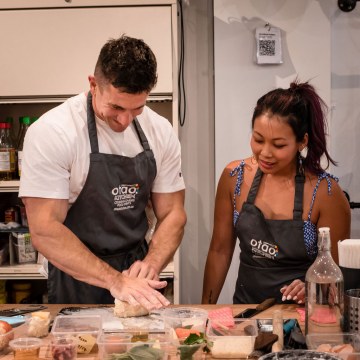
Blogs

Here are six simple Korean BBQ marinades that will infuse your grill with authentic Korean flavors, whether you’re cooking indoors or outdoors. Bulgogi, meaning "fire meat," is one of the most popular Korean dishes, second only to kimchi.

Cooking together as a family is more than just preparing a meal; it’s about bonding, learning new skills, and making memories that last a lifetime. When you involve your kids in the kitchen, you’re not only teaching them essential life skills but also sparking their creativity and helping them develop a healthy relationship with food.

Asia's busy streets are full of exciting things to see, smell, and most importantly, taste. To really enjoy a country's food, you should try the local street food. It's quick, easy, and bursting with flavor—like hot soups, stir-fried noodles, and freshly cooked dishes.

Here’s the simple truth: the fastest way to anyone’s heart is through their stomach. Who doesn’t love being cooked for, right? But what if you’re not exactly a pro in the kitchen?

Private dining has evolved significantly over the years, transforming from a simple concept of enjoying a meal in a private, intimate setting to an elaborate, experience-driven event that engages all the senses. In 2024, private dining is no longer just about savoring delicious food in a beautifully decorated room.

Melbourne is famous for its vibrant food scene and is perfect for street food lovers. You can find everything from tasty Chinese snacks to delicious Greek treats on its streets. If you're planning to visit Melbourne in 2024, make sure to try these 12 must-try street foods:
